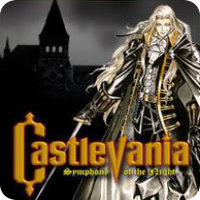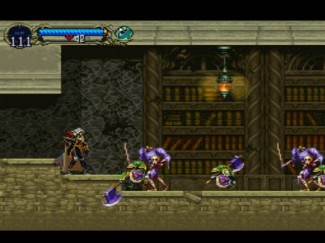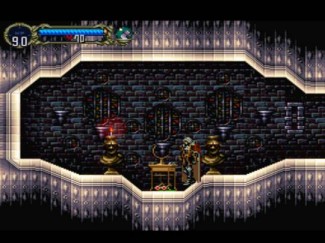Bastion
LQ: 9.15
Recommended Age: 10+
Skills Used: Planning, Working Memory, Mathematics, Reading

In Castlevania: Symphony of the Night, players lead Dracula’s half-vampire son, Alucard, through his father’s cursed castle. Alucard must traverse the maze-like castle and face off against Dracula’s minions, including zombies, skeletons, and other ghoulish foes. Players can collect various weapons and armor to aid them in their quest. Items and weapons dropped by hard enemies are stronger than those dropped by weaker ones, so the further players get in the game, the more powerful they’ll become. In order to defeat Dracula, Alucard must first learn spells, collect items, and “level-up” before he’s strong enough to defeat the vampire master. The game contains fantasy violence with animated blood, but it is all directed toward monsters. There is no offensive material or sexual content, though some female characters are scantily clad. Due to the somewhat mature themes and moderate violence, Castlevania: Symphony of the Night is recommended to players ages 13 and up.
Recalling and retaining information in our minds while working.

A big part of Castlevania: Symphony of the Night involves exploring the environment. The majority of the game takes place in Dracula's castle, a huge and dangerous place full of secrets. The further players get into the game, the more they have to remember. As players collect more items, spells, and abilities, they'll get access to new areas, many of which require back-tracking through the castle. Players need to keep their location in the castle in mind at all times, so that they can remember where they've been and figure out where they need to go next. Furthermore, Many of Alucard’s skills, such as his magic spells, require fairly complicated button presses to execute. Working Memory skills can help players learn these actions and recall them in battle.
Adapting and adjusting to changing conditions and expectations.
Each area in Castlevania: Symphony of the Night has a unique layout and features a variety enemies. For example, the Castle Entrance is a large and open area, and its enemies are numerous but quite weak. The Alchemy Lab, however, has fairly low ceilings (making it difficult to avoid enemies by jumping over them) and more resilient monsters. Also, Alucard will acquire new abilities from equipment and artifacts as the game progresses. Players can eventually transform Alucard into a wolf, a bat, or a cloud of mist; they can have him jump the height of the screen or deliver a flurry of damaging punches; they can even have him cast spells that drain the health from his enemies. In order to succeed, players must take advantage of Alucard's versatile abilities to solve puzzles and vanquish foes.
Arranging and coordinating materials in order to complete a task. Organizing ideas.

All membership plans come with full access to our entire suite of tools learning guides, and resources. Here are a few of the ones we think you’ll like the most: